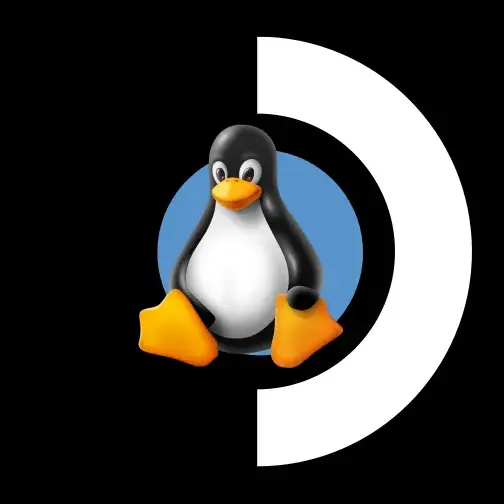

…but I thought performance was fine, why would something fine be their top priority? Pitchford couldn’t possibly have been talking out of his ass, could he?
Suburban Chicago since 1981.


…but I thought performance was fine, why would something fine be their top priority? Pitchford couldn’t possibly have been talking out of his ass, could he?


Proxmox 9 dropped too, their major releases coincide with Debian’s. Upgrade process on a single standalone box was completely uneventful; I’ll be trying a 9-node cluster on Monday.


Yes, that’s the only reason. You can mix drive sizes and still have a dedicated parity drive to rebuild from in case things go poorly. I am aware that it’s basically LVM with extra steps, but for a NAS I just want it to be as appliance-like as possible.
Still using Scale at work, though - that use case is different.


Just got unraid up and running for the first time today. There’s a bit of a learning curve coming from TrueNAS Scale but it supports my use case: throwing whatever spinning rust I have into one big array. Seems to work alright, hardware could use additional cooling so I’ve shut it off until a new heatsink arrives.


I’m self hosting a lot of things, but those services are mostly on Debian. I’m daily driving AlmaLinux on my main desktop. I do a decent amount of video editing using DaVinci Resolve Studio, and while I’ve consistently gotten it working on Pop!_OS and EndeavourOS, I couldn’t get the Micro Color Panel working on anything other than the CentOS successors. I tried manipulating udev rules, sniffing USB traffic, etc but it just wouldn’t go on anything else. The product was fairly new to market when I bought it so the body of knowledge may have changed since then.
Blackmagic Design officially supports Resolve and Reaolve Studio on Linux, but only on their lightly preconfigured version of Rocky 8. Everything else is best-effort, so I started with the Blackmagic ISO, converted it to AlmaLinux 8.6, and then upgraded to 9, and the Micro Color Panel still works.
I also love that my external disk array works with every kernel update because the kernel’s so old. I keep all my originals on an 8-disk ZFS array connected to a cross-flashed Dell PERC H810. Endeavour and Pop sometimes go beyond the kernel versions supported by zfsonlinux, and editing the source code of a file system is not something I’m particularly comfortable with.
Also, every game I’ve played on it works, though I mainly play single-player titles.
As for parity: I’ve got several hundred VMs at the office on Rocky, and maybe a dozen on Alma, and both are running flawlessly. They’ve been as solid as the RHEL physical machines. Quite happy with all of them, to be honest.


If you use a distro with the nvidia drivers preinstalled, or you get the drivers set up with dkms, you don’t need to reinstall the driver with every kernel update.
Pop!_OS has the drivers in their repo and they get applied during system updates like any other package; I’m sure this is the case with Bazzite as well.
I use AlmaLinux at home with the driver from nvidia’s site (yes, I’m aware that rpmfusion exists), and have never had to reinstall the drivers as the installer configures dkms to do it every time the kernel is updated. Same with my Plex server (Debian, Quadro P2200) and my office workstation (Arch, Quadro P600).


The Dev One laptop wasn’t half bad as a collab between HP and System76. Full AMD hardware stack, easy RAM and storage upgrades, Pop!_OS from the factory.
Came with WiFi 5 (easy enough to upgrade to 6) and no TPM/Secure Boot capabilities, has the typical HP flimsy display hinges, and the 1920x1080 glossy display has the worst viewing angles in history, but I guess that makes it quarter-bad rather than half.


Nice! I started it 3 or 4 times but got distracted. Having a much easier time staying focused now, so I’m playing through Ultimate Edition. I don’t plan on doing the rest, though - will go to Baldur’s Gate 3 after this one.


Dragon Age: Origins. Never got around to finishing it before.


Nightly rsync to two NAS boxes in the house (TrueNAS Scale and a Synology). Docs go in NextCloud, hosted on a VM in my basement, which is also backed up to the Synology by Proxmox. Also backing up my main machine (Pop!_OS) and my wife’s laptop (ThinkPad E595, also Pop!_OS) using Spideroak One.


I can quit any time I want. Pay no attention to the fact that I played it during a Teams meeting with Corporate last night and didn’t get to bed until 2:30.


Cosmic - both the GNOME extension and Epoch 1 - is my favorite tiling DE. It just makes the most sense to me, in a way that no other tiling environment has.


This - but I’d take it a step further and use a small-ish USB 3.2 SSD with Ventoy instead. That way, your live Linux experience isn’t kneecapped by having to load programs off a slow USB stick. In a pinch you can use a SATA SSD with a USB-SATA adapter too, that way you can cram a ton of ISOs on there and go to town.


If you’re using Debian as a daily driver you can always use a Flatpak if you need a newer version than what’s available in the repos. The foundation is solid, though, and that’s what matters - it’s one of the things that keeps bringing me back to Debian for office workstation use.


Indeed - but it runs really well through Proton, as does BL2, so no big deal.
Horizon Zero Dawn runs perfectly through Proton as well. Currently playing Forbidden West, about 24 hours in, and have encountered some minor issues (occasional momentary graphical glitches, rare instances of dialog drops requiring exit to title screen), but I’m not complaining.


There was a native release from the jump, it was always kind of jarring being able to install it without selecting a Proton version first.


Borderlands 2. Give me a mindless Diablo With Guns experience any day.


…no, I don’t want to put all my stuff in OneDrive. No, my settings shouldn’t sync across everything. No, I don’t want to log in with the same account on all devices. I already have email and do not want to use outlook.com thanks. Stop warning me that I did not agree to put all my stuff in OneDrive, it’s really not necessary. What do you mean I can’t change my wallpaper unless I activate? Are you telling me that your antimalware solution that comes bundled in the OS isn’t able to block malicious ads in the browser that also comes with the OS? Why do these applications that I never installed keep showing up in the Start menu? What’s up with all these calls to Azure-based websites in my Pi-Hole logs when I’m away from my desk? Why are my CPUs going at full blast when I’m just staring at the desktop?
Linux Mint. If my 85-year-old dad can get used to it after over 30 years of Windows, you’ll be fine.
/edit Also Firefox comes with pretty much every Linux distribution, but if you need something Chromium-based, I’m partial to Vivaldi.